FRICTION- VIDEOGAMES
Things that go down smoothly are so rarely memorable. Sure, you probably have a favourite movie you feel is beyond reproach, but even these will undoubtedly contain some rough edges you either choose to ignore or consider part of its charm. These frictive elements don’t get in the way of your enjoyment, but more than they’re an essential part of the texture. Smooth away too much, and well, you have something like the Marvel Cinematic Universe. These movies are mostly well put together, and I have legitimately enjoyed a couple of them. They are aiming for popcorn entertainment, with enough checks and balances to avoid anything too offensive. They have an excellent formula for box office success, but that formula doesn’t make it crack into many peoples all-time favourites. If you don’t swing, you’ll never miss, but it makes for a boring game of baseball. That’s not to say I’m above such experiences, particularly when it comes to games. Insomniac’s Spiderman is fun to move around in and has a surprisingly entertaining story. It’s a game I’ve thought about zero times since finishing it, but I don’t have anything hugely negative to say about it save for Spiderman installing monitoring equipment for the cops. A shot of breezy fun can be just the ticket. I have my limits, though.
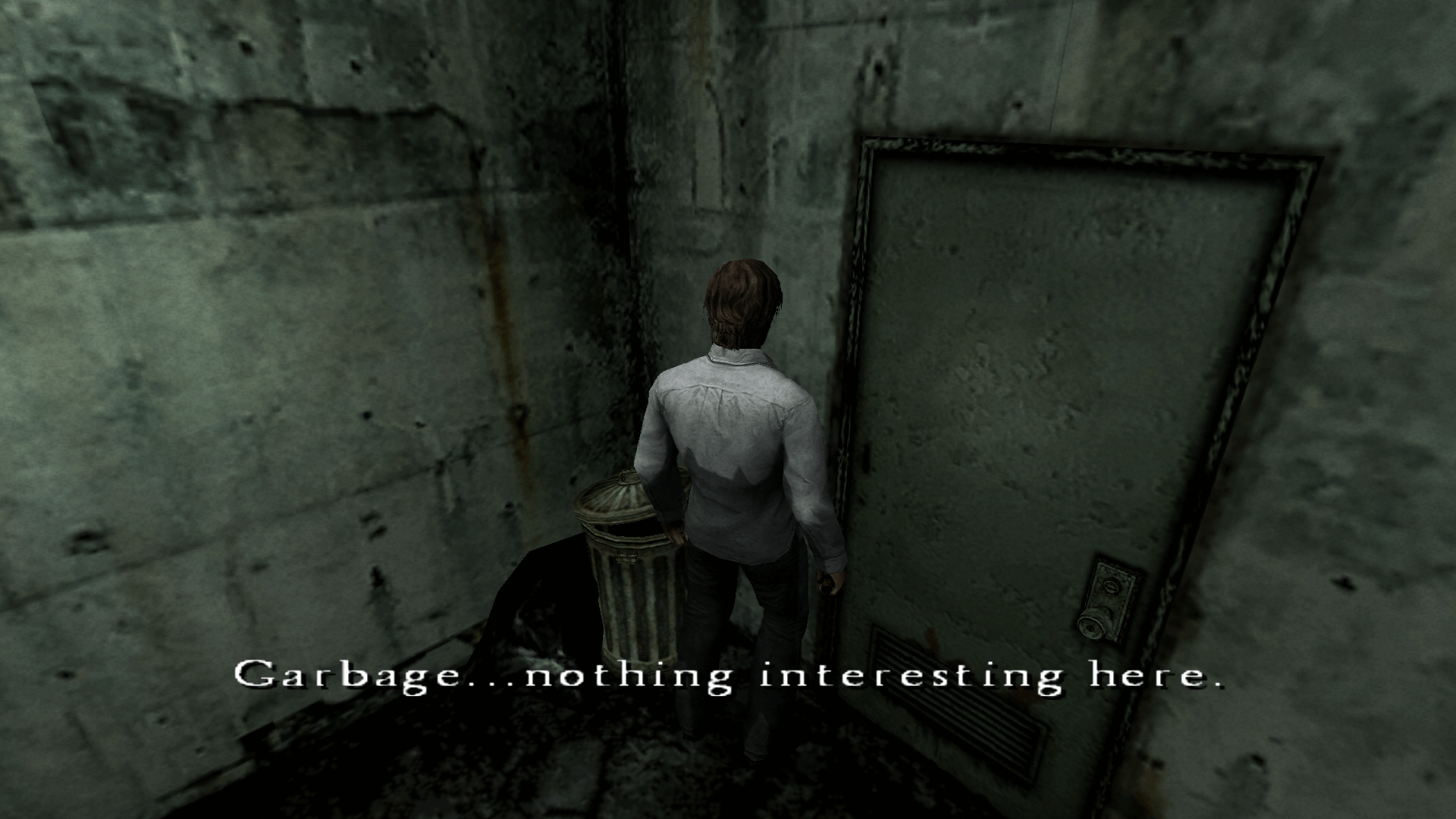
Ubisoft open-world games go beyond Marvel smoothness. They’ve crafted a formula that they can awkwardly shove into IPs as thematically distinct as Assassins Creed, Ghost Recon and Far Cry. Never mind that said formula boils down to poking at addled dopamine receptors every time you pick up a shiny trinket. These games are “fine”, and I would never begrudge someone using them to unwind after a crappy day of work. But if Far Cry 2’s reappraisal is anything to go by, a little friction would help them stand out from each other. In that game, the friction is intentional. Treating malaria and fixing broken guns is not supposed to be a fun experience. But this raises interesting questions. When an author creates deliberate pain points, how are we to categorise legitimate flaws? How can we even tell the difference between purposeful cringe and unintentional aggravation? I want to examine this friction in fiction (hopefully, my punny title has sunk in by now), with each article in this series focusing on a different medium. I’m starting with games, which are distinct in that their friction can be environmental, mechanical, narrative, aesthetic, or all at once. While there’s a lot to say about film, music and novels, video games’ combination of mediums should serve as a good introduction, or at least it can stand alone if I never get round to the other parts of this series.
My first experience with this more abrasive style was from erstwhile pretentious game-liker darling Suda51, though not from the more popular Killer7. No, it was from the bizarre sequel to a game that wouldn’t see a release until years later, ported from the PS2 to DS in Crunch-O-Vision, Flower, Sun and Rain. I’ve been playing it on an emulator, hence why the screenshots are less crusty than the real deal, but I assure you it’s as baffling and obtuse as it ever was.
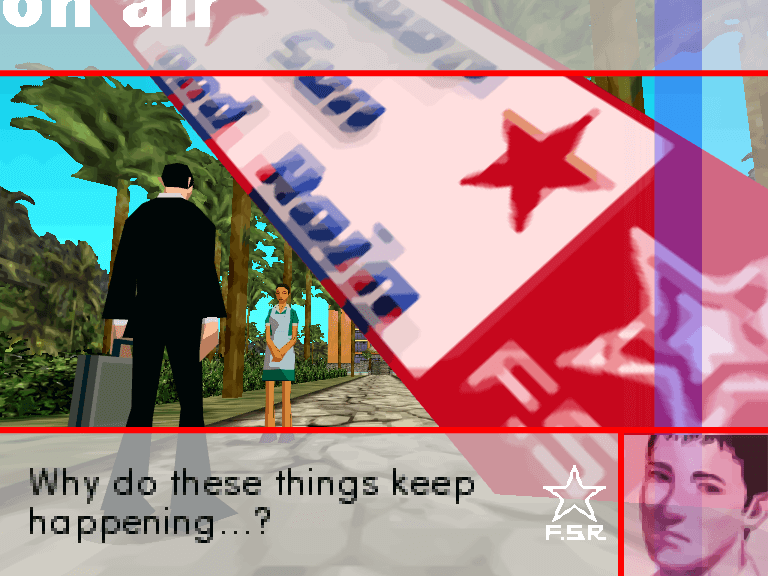
Nominally an adventure game, FSR follows Sumio Mondo, a loosely defined “searcher” who solves problems by jacking into various objects with his magic computer briefcase. Like classic adventure games, the puzzles are a lot less endearing than the writing, which oozes charm and irreverence despite a sometimes wonky translation (considering it constantly references a game that was then unreleased in the West, I can hardly blame them). Unlike a classic adventure game, almost all the puzzles involve inputting a number you read from a manual or doing some basic arithmetic. Not exciting stuff, but they’re relatively straightforward, and it’s interesting that the human mind really can get used to anything, even ramming random jacks into eyeballs/cocktail shakers/footballs. It is also not a point and click, which, while not a detriment in itself, means that each repetitious step must be taken manually. Did I mention that you’re stuck in a time loop, in which even your journey out of the hotel lobby takes multiple days, interrupted as it is with poltergeists, luchadors and a very annoying child? The trips only become more laborious from there, all the while the in-game pedometer seeks to remind you that if this is funny, you’re the punchline. Twin Peaks the Return might have been able to make viewers watch minutes of Jean-Michel Renault sweeping the floor, but FSR forces you to be in the driver’s seat of these deliberately dull sections. You cannot zone out as Sumio goofily stomps up and down the beach. You must be present.
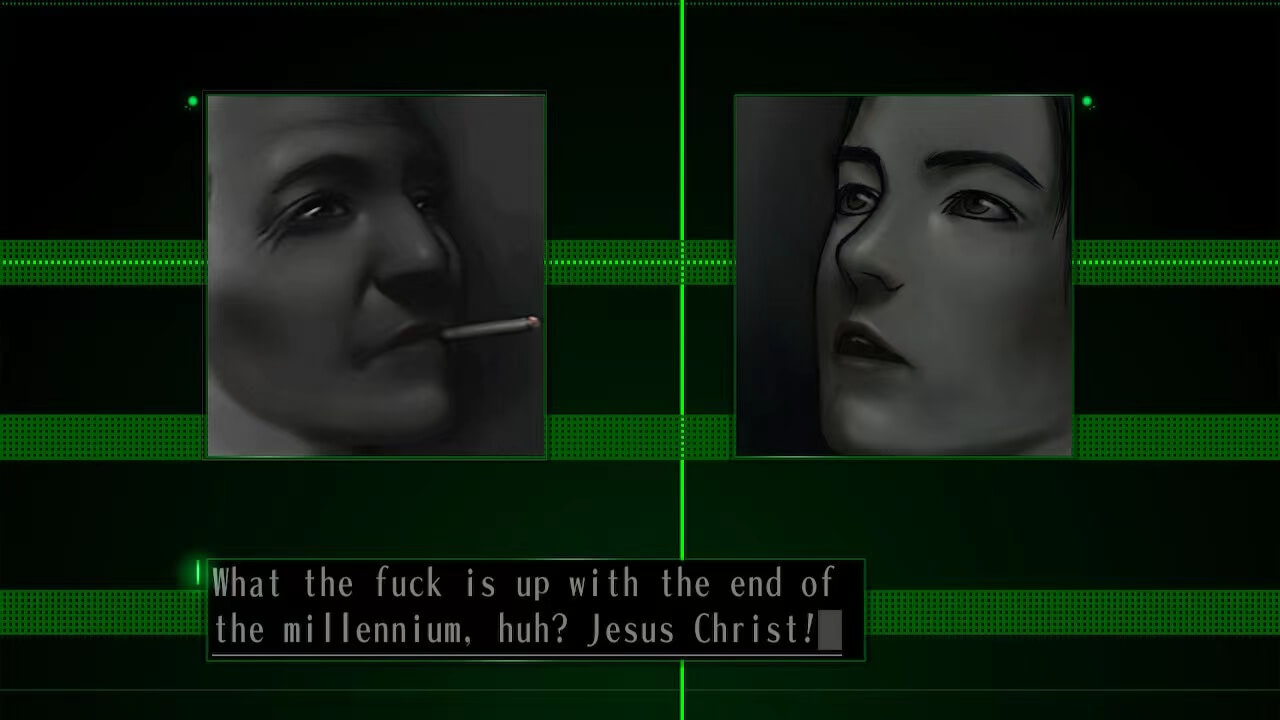
The Silver Case, the game FSR follows on from, has similar deliberately drawn-out exploration, particularly the apartment chapter, in which you must laboriously go up and down the same flights of stairs over and over. The difference is in intent- The Silver Case is a product of Japan’s “lost decade”, filled with the greying tower blocks and nihilism of a Ryu Murakami novel, or Kurosawa’s Pulse. Traipsing up and down a very tall apartment building with no elevator, mainly interacting with shut-ins and orphaned children- it highlights the grimness of the setting and your task. FSR is not a grim game, despite following on from several dangling plot threads in The Silver Case. But elaborating on this trick in a different setting heightens the sense of absurdity and acts as necessary pacing between each bizarre encounter.
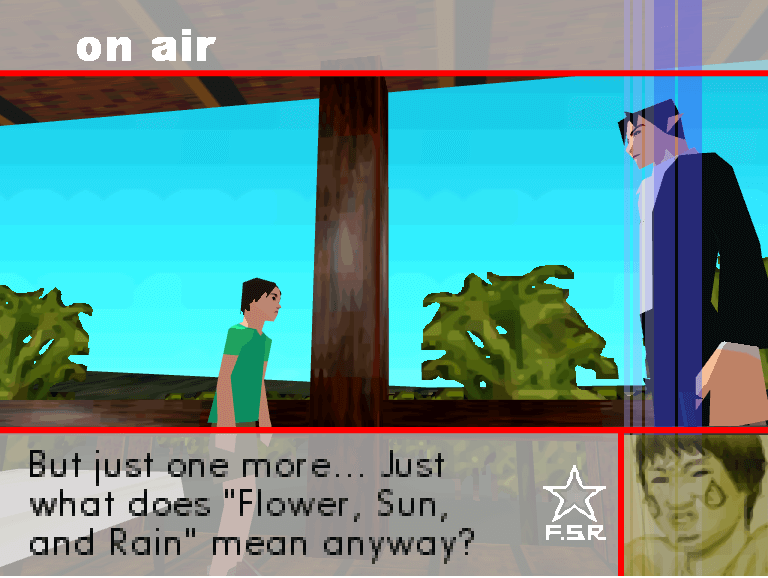
I remember first playing FSR around a decade ago. The way my friend and I talk about it now, we sound like we survived something. I’m sure we’ll never forget it. It was a baptism of fire on a DS cartridge, and I was happy to see that on returning to it, it hadn’t lost some of its uh, magic. It’s a difficult one to recommend. I would suggest starting with virtually any other Suda51 game (the aforementioned Killer7 or No More Heroes offer distinct but accessible entry points). That it’s trying to be more comedic means it definitely won’t work for everybody, especially when the humour lands on the more meta side of things. Still, if you do decide to jump into it, it might just click the same way it did to my weird brain ten years ago.
But yes, I should probably talk about something more recent and accessible than a weird old DS game. I’ll do one better and talk about one of 2021’s great success stories- Metroid Dread. It’s an excellent game, a generous search-action (albeit with more emphasis on action) romp with wonderfully smooth controls and animation. And then there are the EMMI. These stalking robots are a marvel to look at, folding over themselves and crawling on walls, and provide a welcome moment of powerlessness to a game that has you firing multi-missiles and flash-stepping and breaking the sound barrier with shine sparks. They’re speed bumps that break up an otherwise extremely smooth experience, and so naturally, their inclusion is contentious. As with Mercury Steam’s previous Metroid game, Samus Returns, I’d argue that they’re a good idea but overstay their welcome, though thankfully not to the same degree as that game’s Metroid hunting. Unfortunately, the EMMI are in what will be a lot of peoples first Metroid game.
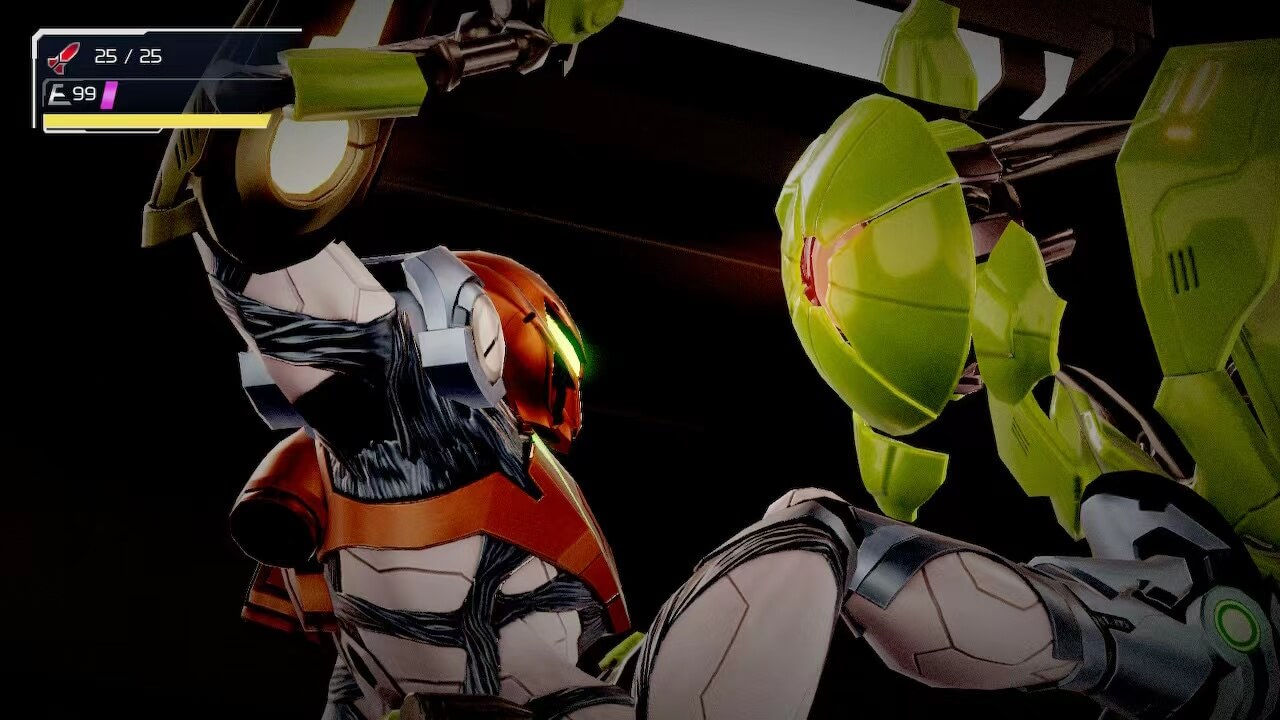
Dread has had the most successful launch of any game in the series, bolstered by the bonkers popularity of the Switch. That is already the most challenging game in the series (though not the most punishing), making it a rough first entry, so, understandably, the EMMI has become symbolic of all the issues this game has. I can’t go completely contrarian and say every encounter with them is fun, but I do think simply removing them would rob Dread of its identity. Super Metroid and Zero Mission are both great examples of the standard Metroid formula, and while Nintendo is very irritating when it comes to making GBA games legally available, Super is highly accessible. Besides, the EMMI are hardly Dread’s only subversion from the formula. You need only look at how long it takes to unlock the morph ball, an iconic ability usually only a screen away. Such changes will not be noticeable if Dread is your first rodeo. Maybe it was a questionable decision to cater more to fans in your release on a console that’s introducing Nintendo staples to all-new audiences. I guess you can’t pick which entry will catch fire, so it’s welcome friction for me, but that very friction may deter others from the series. Nintendo is uniformly dogshit for accessibility, but even a full suite of options couldn’t offset a deliberate narrative decision, built on the back of Fusion, for this to be a different take on Metroid. So it walks the knife-edge, and I and many others have appreciated it taking the risks it does. As for the broader discourse, we’ll have to see, but it’s far from the disaster it could have been.

Speaking of disasters! The first article I wrote on this blog was about Deadly Premonition 2, a game that I may have been too kind to in retrospect. The joyless quests and abysmal combat do not add jank seasoning as the eccentricities of the original did. It’s a fine enough second outing in a narrative sense, and I guess skating is still more interesting than driving, but everything else is a downgrade. That original game, lest we forget, holds the 2012 Guinness World Record for “most critically polarising survival horror game”. It’s a cult game, and like most cult sequels, lightning didn’t strike twice. Swery is rumoured to have had very little involvement in the development; his efforts focused on the recently released The Good Life. That game hasn’t sucked me in yet (Francis York Morgan is a once in a lifetime creation that, unfortunately, Naomi cannot match) , but its smaller, more purposeful world with NPCs that follow schedules (the most bewildering absence from 2) already gives me a much better vibe. It’s the Swery special, a good mix of interesting creative decisions you’d never see in the mainstream (simulating awful rural internet speeds in a game about taking and uploading photos is a brave choice) and general incompetence (it includes no way to view tutorials, so screenshots of each screen were uploaded online by the developer). I’d have it no other way.
There is another reason I haven’t played much of The Good Life, and it isn’t its fault. 2021 has had plenty of other fantastic, weird experiences in video games (I wanted to talk about the Outer Wilds DLC in this, but you should play it and buy Fallow too!), but there’s one in particular that has stolen my heart.
It’s called CRUELTY SQUAD.
In the beginning, I highlighted how video games could contain environmental, mechanical, narrative and aesthetic friction. Cruelty Squad has all of these at once. It is, after all, a game that looks like this:

And it sounds like this:
If this is your first time confronting this game, you might think it’s a shitpost and that I am being ironic in heaping praise on it. I promise you I am not. Cruelty Squad is easily my game of the year, and I’ve played Metroid since before high school. It’s incredibly well-considered, pushing just about as far as it can in each area while still being highly satisfying. The controls take some getting used to, especially the wild but oddly intuitive reload that requires you to drag your mouse backwards. After overcoming that initial hurdle, the game reveals itself to be an entry in that most lauded of genres, the Immersive Sim. At the start of every level, your horrifying boss gives you targets to assassinate and a load out to customise, ala Hitman, though here you are given much more freedom to break the game. Of all things, it gave me the vibe of EYE Divine Cybermancy, the holy grail of eurojank. However, instead of levelling up my endurance and agility to become one with the speed force, our unnamed central character installs experimental biopunk implants. A highlight of the non-secret ones is the Grappendix, a disgusting organ that shoots out your midsection, allowing you to Spider-Man your way through levels or abseil down buildings. Or how about the Skullgun, a machine gun exiting your eye that only requires partial scooping out of unimportant brain tissue? You have plenty of options, and the game encourages replays through rankings and a plethora of secrets hidden off the beaten track. It recalls the experience of playing games as a kid, where each world you entered seemed teeming with hidden knowledge, perfect fodder for playground rumours and wide-eyed exploration. It’s just that to get that effect as an adult; you need something a bit wilder than a Zelda or a Mario game.
As extremely abrasive as its style is, it doesn’t forget to be fun. And that’s the key you can get away with a lot, but the more friction you apply to one area, the smoother another area should be. I would not tolerate the lacklustre gameplay of Flower, Sun and Rain if the plot and overall vibe weren’t so interesting. Likewise, Metroid Dread can fumble its gimmick a bit, considering its stellar atmosphere and game feel. Deadly Premonition 2 is what happens when there’s a fundamental misunderstanding of its appeal and mistakes uniform sloppiness for charming idiosyncrasies. Cruelty Squad is the opposite, firing on all weirdo cylinders knowing that it will aggravate and confuse many, but conceding by giving a central game loop that is consistently fun and not dissimilar to some of the most celebrated videogames of all time. You have to know when to pull your punches. If you’re unconvinced of the appeal, I understand, but Steam refunds being what they are, there’s no harm giving it a try for a bit. It’s here for a weird time, not a good time, and if that’s something you can dig, you owe it to yourself to experience it.

It’s near the end of the article, so here’s the traditional acknowledgement of the weird state of the world and my brain and how maybe we should all give ourselves some slack. Though I seek to (mostly!) write about things I enjoy, most of my written output has required me to either re-examine past traumas, research awful things, or worse, rewatch Evangelion movies. Part of writing this has been going against the internal friction of my brain. Why bother with all this frictive stuff? Perhaps I focus too much on media I feel I can get something out of. I can never get into life sim games because I can feel my time trickling away. Animal Crossing is different somehow because you can just jump in every day, but even that I abandoned until the recent update. Comfy and cosy experiences are things I find difficult to enjoy by myself; my mind will inevitably wander to some uncomfortable place.
Still, sometimes it works. I’ve put way too much time into Hyrule Warriors: Age of Calamity, a game that’s unchallenging in every sense of the word. Tim Rogers described the original as the videogame equivalent of a pachinko parlour, a dizzying assortment of noise and sticky mechanics that overload your brain, which is perhaps why I can engage with it. AoC is a less diverse game than its predecessor and a sham as a Warriors title (bases rarely fall to the enemy, removing almost any strategy), but it wears the skin of Breath of the Wild, and I like Breath of the Wild a lot. The characters are charming with unique movesets, and it provides ample (if repetitive) content. If this sounds like the junky Ubisoft games I was complaining about at the beginning, remember that it is literally ok when Japan does it. It’s never a game I bring up in conversation, nor do I feel I’ve gleaned much from it save from catharsis, the game equivalent of listening to a Merzbow album. It’s a rare example where I’m not obsessed over being productive in some way, so I value it in that sense, but it really could be any game. It’s not unique. Now that the videogame industry is in a weird midlife crisis, I treasure these more bizarre experiences. Friction can put you in situations you don’t want to be in that you can learn from. Freedom and smoothness can let you have control in a complicated world. There’s a place for both, and maybe I should let myself have more of the latter, but I’m glad that for as nauseating as mainstream gaming can be, there’s always going to be a space for me to get weird with it.
Also, did you guys hear about this game called Dark Souls?
..